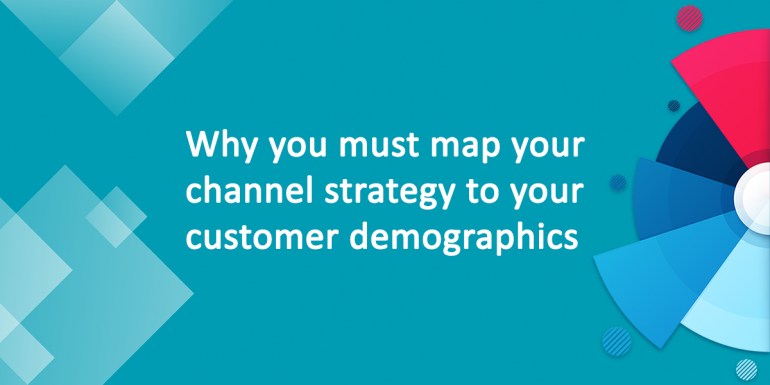Why you must map your channel strategy to your customer demographics

Customer expectations are rising continually – particularly when it comes to the service they receive from businesses. Delivering the right level of service across different channels obviously requires you to understand your customers, their needs and requirements.
Demographics play a big part in this, particularly when it comes to channel preferences and how long consumers are willing to wait for a response. To learn more our Channel Choice Best Practice Guide asked a demographically balanced sample of 1,000 UK consumers to rank their preferred channels across different parts of the customer journey, along with their expectations in terms of speed. While some findings may be unsurprising, others underline how essential it is to fine-tune customer service channel strategies so they align closely with the needs of different groups.
Women vs Men
For example, the study reveals that men are more likely to use Twitter and Facebook than women to communicate with brands – for example, 11% of men would chase up an order via Twitter, compared to just 4% of women. While this is potentially surprising given women are generally heavier users of social media I suspect this might be down to women being warier about the risks of online abuse and trolling on such public channels.
In fact, women rely heavily on channels that involve conversations with a customer service agent, such as chat or the phone. Nearly four in ten (39%) prefer to call to solve a complicated problem, against 29% of men, for example.
At the same time, women tend to be more impatient than men when it comes to speed of response on the voice channel. Nearly two-thirds (64%) want brands to answer a phone call within 5 minutes, compared to 47% of men.
The 55 year+ demographic
Contrary to expectations of them being cautious on digital channels, 51% of this group prefer to do their research online, rather than on other channels. Although, they’re also the most likely to want to use the telephone to interact with brands, and the least likely to use social media. They don’t feel comfortable using chat and will only choose to use it if they need answers to routine questions. They are also the most impatient, with the highest percentage demanding answers faster than other groups in seven out of eight categories
45-54-year olds
This group is extremely comfortable using the phone to contact brands – but appear to be pressed for time - 73% would hang up if they don’t get their problem solved in 15 minutes. They are also the most likely to use online chat, although they have similar levels of impatience as on the phone, with 72% saying they’ll leave a session after 15 minutes if they don’t get relevant answers. By contrast, they are not big fans of email, preferring to use it mostly for making complaints or when they want to resolve a problem.
35-44-year olds
35-34-year olds are the least likely to turn to websites or self-service to find information from brands. They are the heaviest users of email, but also the most impatient on the channel – 45% said they wanted a response to their emails within 30 minutes, against 28% of the 55+ group. They are more patient on other channels, with 58% happy to wait over 5 minutes for a session to start and half willing to wait over 30 minutes for a response on Facebook.
25-34-year olds
The least likely to use email to interact with brands, but the heaviest users of social media. At the same time, they have clear requirements for speed of response - 61% wanted an answer on Twitter within 30 minutes and 57% required Facebook answers within the same timeframe. However, alongside this, they want to have the flexibility to make contact through other channels including chat.
16-24-year olds
Living up to their reputation for being digital-first, this is the group least likely to want to speak to brands on the phone: only 21% would complain via telephone compared with 48% of the over 55s. While they are heavy users of digital channels such as chat, they are less impatient than other demographics in terms of speed of response. While it is seen as a more traditional channel they are surprisingly the most likely to choose email to contact brands when doing research ahead of making a purchase.
What this demographic snapshot shows is that while age groups sometimes display predictable behaviour when it comes to channel choice and expectations around speed this isn’t always the case. The key lesson here for brands is to drill down into your customer base and make sure you adapt your customer service channel strategy accordingly. Map the requirements of customers in different demographic groups against available resources to deliver what they need – and at the speed they want it. Fail to do this and you force customers to do more work to get the information they need, driving them to competitors who better understand and deliver on their requirements.
--
I encourage you to download our Channel Choice Best Practice Guide for further research findings as well as recommendations for delivering an effective multichannel customer service strategy.






